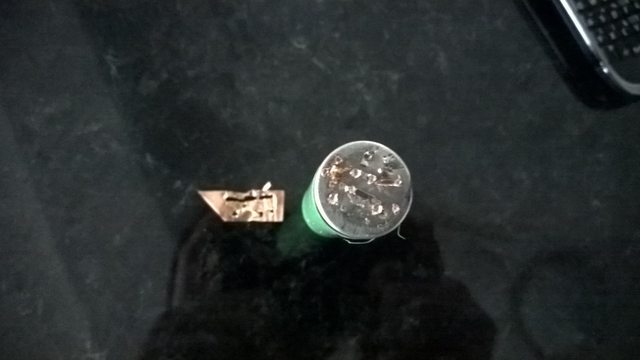You've made something useful here, and I'm looking forward to supporting your efforts!
Thank you  !
!
I don't own a car or a car battery (thankfully) but I do have 30 A123 M1 26650 cells lying around looking for a job to do.
If I have calculated correctly, your setup using two 45 Ah 12 volt batteries in parallel has 720 cold cranking amps. This implies an internal resistance of 16.7 milli ohms.
I think your calculation is a bit of, I get around 6.5 mohm. ( Ri=Udrop/I, R=(12-7)/(380*2)= 6.578 mohm )
Each A123 M1 cell is rated at 10 milli Ohm internal resistance according to the data sheet. So, three in series should be 30 milli ohms, then paralleling two sets of three in series should result in 15 milli ohms of internal resistance for the 3S2P pack. This battery would provide 10 volts rather than the 12-14 volts a car battery would provide, so it is quite similar to your two parallel car battery setup. I think it should work well, but I will need to make thick connections between the cells in order to support the current flow. Do you see any other problems with using a 3S2P A123 pack to power the welder?
I don't see a problem, but you must take into consideration that every connection you make adds additional resistance.
Back when I was brand new to all this, I blew a divet out of a thick screwdriver blade while building an A123 pack, I didn't realize at the time how close I had come to building a welder!!!
Yes, I'm sure they can punch, you should do experiments if you have time and will to do it.  But I can't give you definite answer, because I've only used starter batteries.
But I can't give you definite answer, because I've only used starter batteries.
Now for the little questions-
Are you ready to ship these once you return from your trip?
Yes, I am. That will be 4. May because 1. May is a holiday, and there's weekend after that.
How much will you charge for 6 replacement FETs for the high power version? I do like to experiment...
I'm not 100% sure, probably around 2.5$ for one 1324 fet.
Could you also sell a barrel jack to solder onto another 12 volt pack to supply logic power? (never hurts to ask)
Sure, no problem!
It looks like the FETs are covered in solder, I've only done soldering with a 40 watt pen style unit- I doubt that will handle removing the FETs from your board and soldering in new ones, what soldering tool do you recommend to make that job quick and easy?
Yes, you should use very strong soldering iron, at least 100 W with big tip. 150 W would be good. But I think that there wont be need for doing that 



